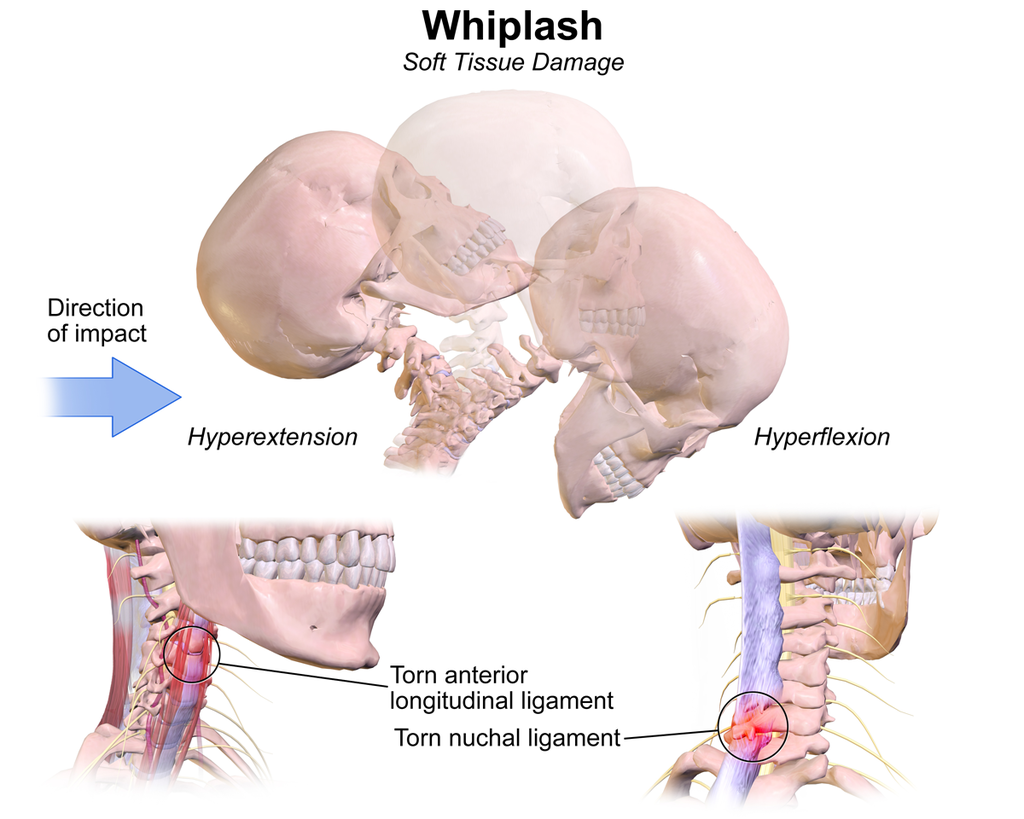|
BOOK NOW |
ASK ABOUT YOUR PAIN |
Home > Blog > Spinal Physiotherapy > Whiplash Physiotherapy
Whiplash Physiotherapy

Whiplash is a common name for an injury which involves sudden whip-like motions that is forced on the neck.
Most of the time, whiplash happens when patient is seated in a car, and a vehicle hits the car from the back. The higher the speed, impact or weight of the vehicle, the worse the whiplash. This causes a quick forward-snap (called acceleration-deceleration) that snaps the head forward-down and then back up.
This can cause injuries to the spine disc, spinal ligaments, tendons, nerve roots and neck muscles. There are several grades to the severity of whiplash associated disorders (WAD).
- Grade 0: No pain or discomfort. No physical signs of injury.
- Grade 1: Neck presents with very mild pain, stiffness or tenderness. No physical signs of injury.
- Grade 2: Neck presents with mild pain, stiffness or tenderness. Some physical signs of injury such as point of tenderness or trouble turning the head.
- Grade 3: Neck presents with moderate pain, stiffness or tenderness and neurological signs of injury, such as changes to the reflexes or weakness in the arms
- Grade 4: Neck presents with severe pain with fracture or dislocation of the neck.
What are the symptoms of whiplash?
The most common symptoms after a whiplash injury are neck pain or
stiffness. This can happen immediately after the injury or even after a
few days later (where patients often get surprised a few days later)
Other symptoms may include:
|
|
treatments available for treatment of whiplash?
There are a few treatments that patients can consider for whiplash:
- Resume an active lifestyle. We recommend patients to be as active as possible within pain and activity limits, and this is much better than avoiding pain and movement, because avoiding pain/movement unfortunately will aggravate pain experience.
- Get ongoing active physiotherapy treatments. Our senior physiotherapist will teach you neck exercises to keep the joints supple and smooth, and strengthen it, as well as treat any pains and improve core and supporting structures.
- Exercise helps improve the range of motion for your neck, improve the function, flexibility and even the pain experienced at rest and with movement, which overall works together to improve your lifestyle, work etc.
- Gentle mobilization techniques - these are gentle techniques that our senior physiotherapists will use to work on your upper and lower neck to safely and gently improve neck range, movement and control. Often, it will also provide pain relief too.
- Regular, ongoing clinical pilates to improve the strength, stamina and stability of the core muscles and neck muscles too. This directly improves posture as well and decreases risk of reinjury.
- Dry needling and acupuncture for pain relief and to influence the nervous system which may accelerate soft tissue healing and improve energy.
- Ultrasound therapy to accelerate soft tissue healing such as ligaments, tendons, muscles etc.